Faculty Research & Honors
All Things Web, Robotics & Animation
Cornell’s extremely talented computer scientists are making our world more productive, progressive, user-friendly, fun, and secure. They produce a broad, important body of work—research and marketable technology—and occupy a distinctive place at the top of the field.
- Do You Believe Online Reviews?
- Claire T. Cardie, Computer Science/Information Science, and Jeffrey T. Hancock, Communication/Information Science
- “Never Send a Human to Do a Machine’s Job.”
- Jon M. Kleinberg and Lillian J. Lee, Computer Science/Information Science
- Learning to Grip
- Hod Lipson, Mechanical and Aerospace Engineering/Computing and Information Science, and Ashutosh Saxena, Computer Science
- Mood Rhythms
- Michael W. Macy, Sociology/Information Science
- Is It or Isn’t It Animated?
- Douglas L. James and Stephen R. Marschner, Computer Science
- Can’t Alter This Message
- Rafael N. Pass, Computer Science
- The Maid is a Robot
- Ashutosh Saxena, Computer Science
Do You Believe Online Reviews?
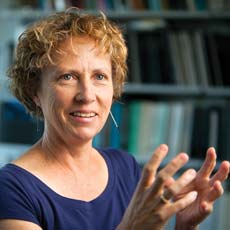
Claire T. Cardie, Computer Science/Information Science, and Jeffrey T. Hancock, Communication/Information Science, know that there is a lot of deception online, and they have been developing computer software to identify deceptive reviews. In a test on 800 reviews of Chicago hotels, a computer was able to pick out deceptive reviews with almost 90 percent accuracy. Cardie, Hancock, and their teams also discovered an intriguing correlation between the linguistic structure of deceptive reviews and fiction writing.
“Never Send a Human to Do a Machine’s Job.”
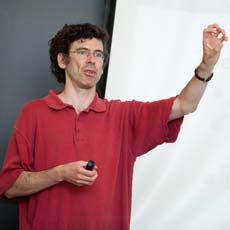
Jon M. Kleinberg and Lillian J. Lee, Computer Science/Information Science, and their graduate students showed how phrasing affects memorability—linguistic features that make a statement stand out—by comparing lines from movie scripts. Whether it’s a line from a movie, an advertising slogan, or a politician’s catchphrase, some statements take hold in people’s minds better than others. Applying computer analysis to a database of movie scripts, the team found clues to what makes a line memorable: memorable lines use familiar sentence structure but incorporate distinctive words or phrases, and they make general statements that could apply elsewhere.
Learning to Grip
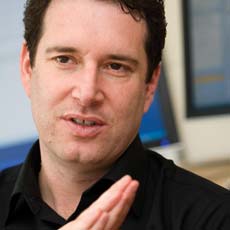
Hod Lipson, Mechanical and Aerospace Engineering/Computing and Information Science, and Ashutosh Saxena, Computer Science, created a hand for an autonomous robot. These labs developed an algorithm that allows a robot to learn grasping skills from experience and apply them in new situations. Inspired by the universal jamming gripper created earlier in the Lipson lab, the new hand will work with any type of robot gripper.
Mood Rhythms
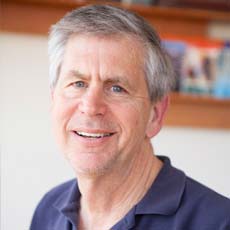
Michael W. Macy, Sociology/Information Science, and his graduate student studied the tweets of 2.4 million people in 84 countries. After an analysis of these public Twitter messages, they found that a day begins on a high, but moods go downhill over the course of a day, only to rebound in the evening. They discovered peaks in positive tweets in the early morning and late at night, on weekdays as well as weekends, across cultures.
Is It or Isn’t It Animated?

Douglas L. James and Stephen R. Marschner, Computer Science, and their colleagues are achieving the details of animation that will make everything so real we won’t know if it’s real or not. That sense of reality requires dressing computer-generated characters in realistic clothing and simulating clothing sounds. They created a method for building simulated knitted fabric out of an array of individual stitches—basically teaching the computer to knit. They also created a method of synthesizing cloth sounds to simulate the rustling of clothing as the characters move.
Can’t Alter This Message

Rafael N. Pass, Computer Science, and his lab developed a new way to send, over a computer network, a message that cannot be altered by a third party—thwarting the man-in-the-middle attack. This is a classic problem in computer security. Instead of the thousands of communication rounds or sender-receiver prearranged plans, the new protocol works with 15 communication rounds or less and does not require a trusted infrastructure set up in advance.
The Maid is a Robot
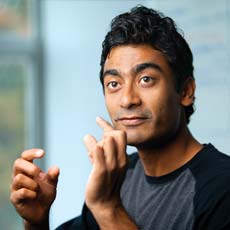
Ashutosh Saxena, Computer Science, and his lab trained a robot to tidy up. The robot can identify objects, pick them up, and put them away. The Saxena lab then added the human element, teaching robots to “hallucinate” where and how humans might stand, sit, or work in a room, so that they can place objects in their usual relationship to the imaginary people.
